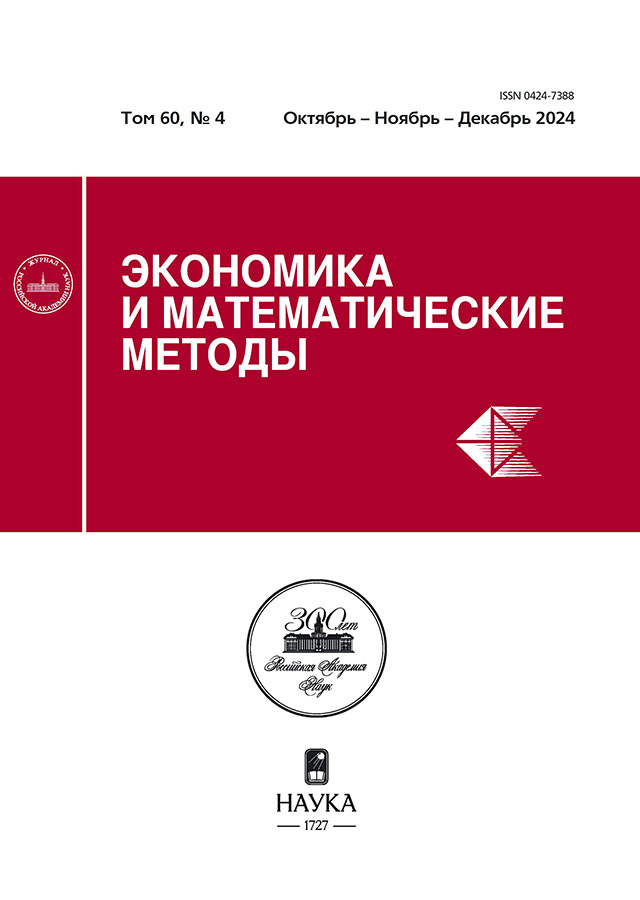Ecological and economic effects of green financing
- Autores: Kudryavtseva O.V.1, Kachalov R.M.2, Chernyavskiy S.V.2, Makeeva N.N.1
-
Afiliações:
- Moscow State University M. V. Lomonosov (MSU)
- Central Economics and Mathematics Institute, Russian Academy of Sciences (CEMI RAS)
- Edição: Volume 60, Nº 4 (2024)
- Páginas: 77-86
- Seção: Ecological problems
- URL: https://gynecology.orscience.ru/0424-7388/article/view/653282
- DOI: https://doi.org/10.31857/S0424738824040073
- ID: 653282
Citar
Texto integral
Resumo
Currently, all three components of sustainable development at all levels are becoming increasingly important to ensure the existence and development of states. This article is devoted to green finance, linking economic and environmental aspects of development. Green financing is a policy direction to reduce negative environmental externalities and attract investment in new technologies, which has become widespread in recent years; green bonds are one of its most important instruments. To assess the impact of issuing green bonds on the environmental component, represented by the equivalent of carbon monoxide emissions, the article was the first to apply a matching procedure to evaluate company data obtained using the Refinitiv database. The authors showed a model specification that supports the hypothesis that the issuance of green bonds has an impact on reducing carbon monoxide equivalent emissions in the long term, but the results of the logarithmic specification of this model turned out to be unstable. From the calculations presented in the article it follows, that despite the fact that the effect of issuing green bonds does not have an immediate impact on the company’s environmental performance, but in the long run it can improve their performance. It helps to raise environmental rating of companies and, in turn, can help attract investments for the development of technologies and infrastructure that ensure technological independence, the use of promising energy sources, the best available technologies, and the transport greening.
Texto integral
Sobre autores
O. Kudryavtseva
Moscow State University M. V. Lomonosov (MSU)
Autor responsável pela correspondência
Email: olgakud@mail.ru
Rússia, Moscow
R. Kachalov
Central Economics and Mathematics Institute, Russian Academy of Sciences (CEMI RAS)
Email: kachalovlya@yandex.ru
Rússia, Moscow
S. Chernyavskiy
Central Economics and Mathematics Institute, Russian Academy of Sciences (CEMI RAS)
Email: vols85-85@mail.ru
Rússia, Moscow
N. Makeeva
Moscow State University M. V. Lomonosov (MSU)
Email: nata.mackeeva.2010@yandex.ru
Rússia, Moscow
Bibliografia
- Бобылёв С. Н., Соловьёва С. В. (2017). Цели устойчивого развития для будущего России // Проблемы прогнозирования. № 3 (162). С. 26–33. [Bobylev S. N., Solovyova S. V. (2017). The goals of sustainable development for the future of Russia. Studies on Russian Economic Development, 3 (162), 26–33 (in Russian).]
- Богачева О. В., Смородинов О. В. (2016). «Зеленые» облигации как важнейший инструмент финансирования «зеленых» проектов // Финансовый журнал. № 2 (30). С. 70–81. [Bogacheva O. V., Smorodinov O. V. (2016). “Green” bonds as the most important tool for financing “green” projects. Financial Journal, 2 (30), 70–81 (in Russian).]
- Вулдридж Дж.М. (2009). Оценивание методом «разность разностей» // Квантиль. № 6. Март. С. 26–47. [Wooldridge J. M. (2009). Difference-in-differences estimation. Quantile, 6, March, 26–47 (in Russian)].
- Попова Т. А., Митракова О. В. (2022). Издержки эмиссии зеленых облигаций на российском рынке // Журнал прикладных исследований. Т. 1. № 8. С. 28–34. [Popova T. A., Mitrakova O. V. (2022). The costs of the emissions of green bonds in the Russian market. Journal of Applied Research, 1, 8, 28–34 (in Russian).]
- Слепцова Ю. А., Качалов Р. М. (2021). Особенности управления риском на предприятиях в составе цифровых бизнес-экосистем // Научно-технические ведомости СПбГПУ. Экономические науки. Т. 14. № 4. С. 49–66. [Sleptsova Yu.A., Kachalov R. M. (2021). Features of risk management at enterprises as part of digital business ecosystems. St. Petersburg State Polytechnical University Journal. Economics, 14, 4, 49–66 (in Russian).]
- Троянова А. (2021). Что такое «зеленые» облигации // РБК. Тренды. Режим доступа: https://trends.rbc.ru/trends/green/60ddcae59a79476590c44ef6 [Trojanova A. (2021). (What are green bonds). rbc. Trends. Available at: https://trends.rbc.ru/trends/green/60ddcae59a79476590c44ef6 (in Russian).]
- Тулупов А. С. (2021). Оценка риска загрязнения окружающей среды: обзор и систематизация методологических подходов и методического обеспечения // Вестник Московского университета. Экономика. № 4. С. 3–27. [Tulupov A. S. (2021). Assessment of the risk of environmental pollution: Review and systematization of methodological approaches and methodological support. Moscow University Economics Bulletin. Series 6. Economy, 4, 3–27 (in Russian).]
- Akerlof G. A. (1978). The market for “lemons”: Quality uncertainty and the market mechanism. Uncertainty in economics. N.Y., L.: Academic Press, 235–251.
- Card D., Kreuger A. (1994). Minimum wages and employment: A case study of the fast-food industry in New Jersey and Pennsylvania. The American Economic Review, 84, 4, 772–793.
- Chava S. (2014). Environmental externalities and cost of capital. Management Science, 60, 9, 2223–2247.
- Du S., Bhattacharya C. B., Sen S. (2010). Maximizing business returns to corporate social responsibility (CSR): The role of CSR communication. International Journal of Management Reviews, 12, 1, 8–19.
- Flammer C. (2020). Green bonds: Effectiveness and implications for public policy. Environmental and Energy Policy and the Economy, 1, 1, 95–128.
- Frésard L., Valta P. (2016). How does corporate investment respond to increased entry threat? The Review of Corporate Finance Studies, 5, 1, 1–35.
- Klassen R. D., McLaughlin C.P. (1996). The impact of environmental management on firm performance. Management Science, 42, 8, 1199–1214.
- Williamson O. E. (1985). The economic institutions of capitalism. Firms, markets, relational contracting. N.Y.: The Free Press, 44–52.
- Zerbib O. D. (2019). The effect of pro-environmental preferences on bond prices: Evidence from green bonds. Journal of Banking & Finance, 98, 39–60.
Arquivos suplementares













